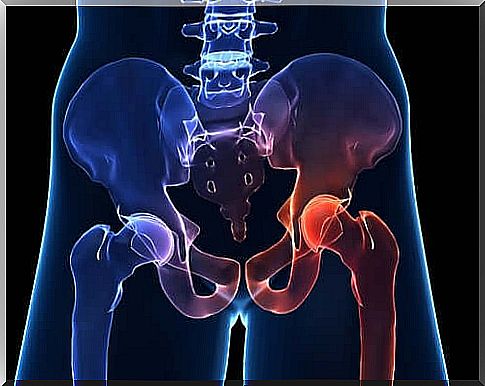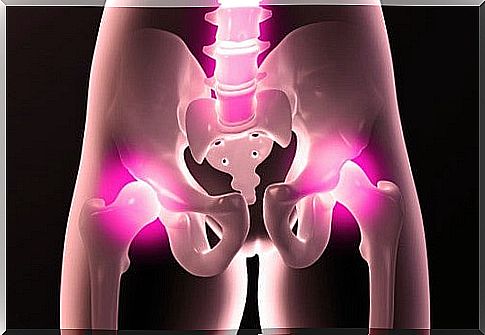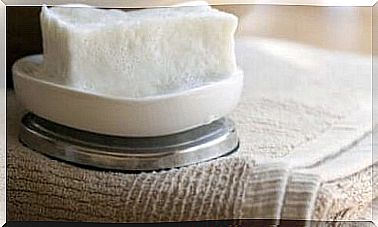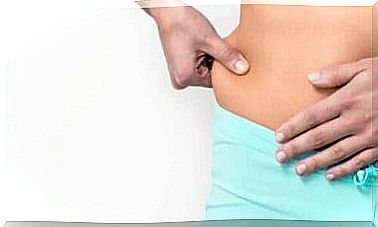Osteoarthritis Of The Hip: Course And Symptoms
Osteoarthritis of the hip has a slow progression and can affect both hips. The most important symptom is pain, which is less severe at rest.

Hip osteoarthritis is the degeneration or wear and tear of hyaline cartilage present in each end of a joint. This cartilage covers the joint to protect it against sliding with other joints and cushioning of loads.
An imbalance due to trauma, a genetic defect or even misuse of the joint, decreases the capacity of the cartilage to retain water. This gives rise to progressive wear and tear on the joint until the bones eventually become deformed. This is why there is pain as well as a loss of mobility.
Causes and risk factors

The cause of osteoarthritis of the hip is not well understood, although there are several conditions that favor its onset. For example, there is a genetic load. This is why osteoarthritis can be inherited.
Deformities of the limbs also predispose, especially in the lower limbs which bear the weight. For this reason, being overweight or obese contributes to overloading the hips and knees, thus increasing the possibility of wear and tear on these joints.
In addition, intense sports practice can also promote the appearance of osteoarthritis, in particular in the lower limbs. Trauma can also lead to early osteoarthritis. Indeed, a fracture can trigger a poor adaptation of the joint.
Symptoms of osteoarthritis of the hip
The most important symptom is pain that manifests in the groin, inner thighs and even knees. Pain is often activity-related and decreases with rest. This type of pain is called “mechanical pain” and is different from inflammatory joint pain.
Indeed, inflammatory joint pain persists even at rest. Also, both hips can be affected, although the pain usually affects only one hip.
Another symptom of osteoarthritis of the hip is loss of movement which makes it difficult to perform various daily activities.
Pain and disability are two progressive symptoms although their course is different from person to person. Lameness is also a consequence of osteoarthritis of the hip. It is accompanied by a characteristic sway of the body in case both joints are affected.
On the other hand, osteoarthritis of the hip has a slow evolution over the years, depending on the activity performed. With the support of proper treatment, many people manage to live normally.
Diagnostic
The diagnosis is made by questioning the symptoms and characteristics. In addition, an examination of the hip joint is performed through movements. Thus, the specialist can assess the degree of existing osteoarthritis.
An x-ray of the hip can also confirm the diagnosis. It shows the typical changes produced by osteoarthritis of the hip. This then makes it possible to establish a prognosis depending on the severity and wear and tear of the hip.
Furthermore, there is no direct link between the intensity of the degeneration and that of the symptoms. Indeed, a heavily worn hip can be painless, although it is progressively more rigid, and vice versa.
Treatment of osteoarthritis of the hip

Treatment for osteoarthritis is aimed at relieving pain and treating functional disability. The doctor will then prescribe certain medications to the patient.
- Analgesics: these are the most widely used drugs. They reduce pain and improve the stiffness of the joint. The most common pain reliever is paracetamol.
- Anti-inflammatory drugs: These are non-steroidal anti-inflammatory drugs used especially when the pain is more acute.
- Chondroprotectors: these are substances that make up the articular cartilage and reduce pain. We find for example glucosamine and chondroitin sulfate.
- Inter-articular therapy or infiltrations: anti-inflammatory substances are administered into the joint. Most often these are glucocorticoids and more recently hyaluronic acid.
In addition, it is recommended to follow a healthy lifestyle. If necessary, the doctor will suggest certain measures to relieve the discomfort. Like, for example, the application of cold compresses and physiotherapy.
According to the Spanish doctor Alexandra Villa-Forte “applying cold (through ice for example) can help relieve pain caused by joint inflammation”.
Good habits, the best daily support
Adopting and maintaining good postural hygiene, avoiding overuse or improper use of the joints, exercising regularly, taking measures to treat or prevent obesity, and using adequate footwear, are some of the most common measures. recommended by experts for the well-being of patients with osteoarthritis of the hip.
Finally, it should be noted that the practice of physical exercise will be done according to the particularities of the patient. This is why it is always important to consult your doctor.









